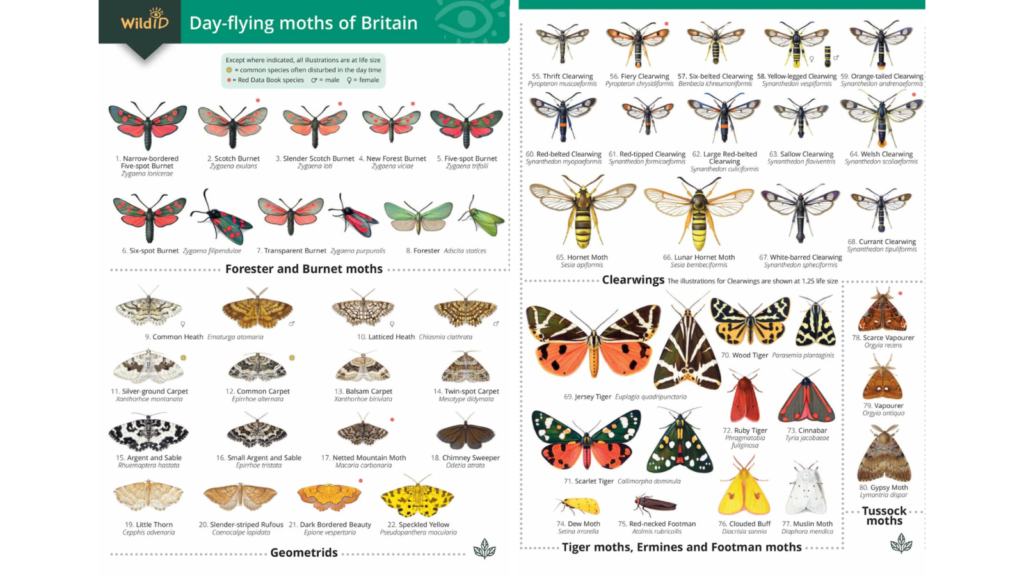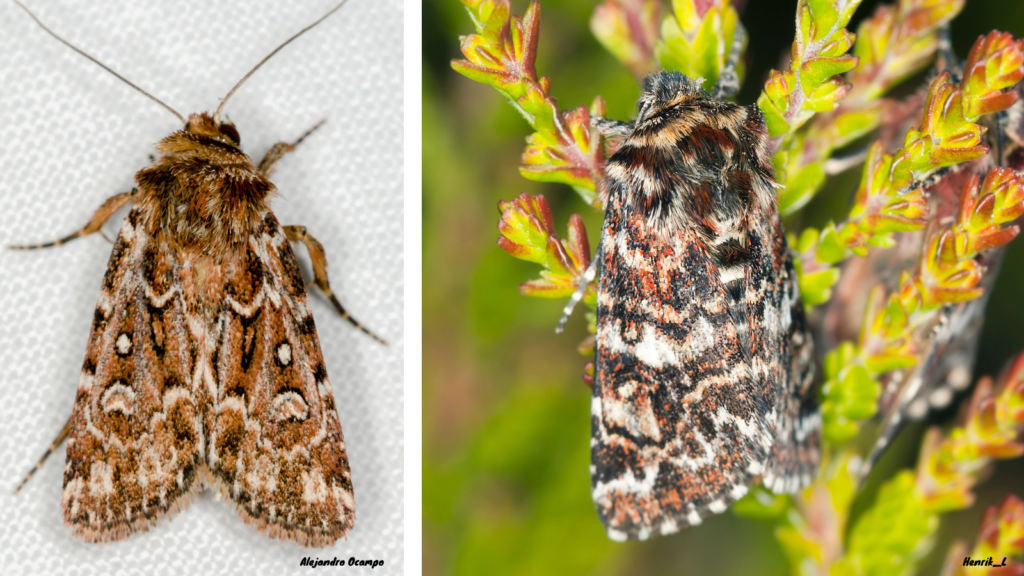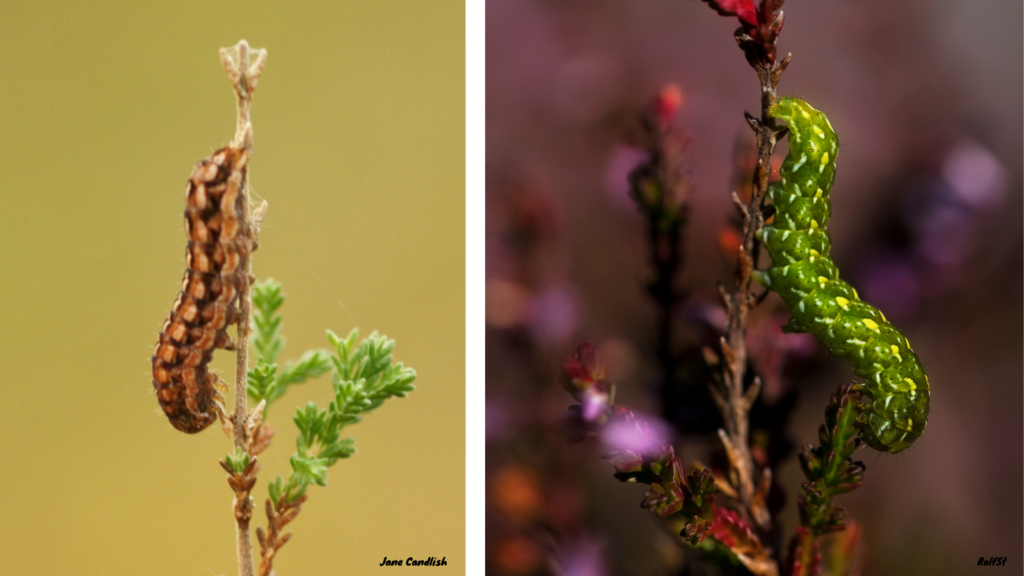Day-flying moths for Heath Week
Did you know that 250 of our 2,500 moth species can be seen flying in the daytime? Many of these are featured in a fold-out guide published by the Field Studies Council:
I use a close-up monocular to help me identify moths that are similar in appearance to other moths. The three things I take note of are: Whether the antennae are ‘simple’ or ‘feathery’, the wing shape and any markings that particularly stand out.
Two very attractive, common, day-flying heathland moths are similar in appearance at first glance, but on closer inspection the markings are quite different…
The wonderfully-named True Lover’s Knot flies in one generation from June to August…
More information: Butterfly Conservation.
The Beautiful Yellow Underwing has two generations (only in the south of England), flying from late-April to August. It’s one of several moths with yellow hindwings.
More information: Butterfly Conservation.
The caterpillars of both species feed exclusively on heather…
Take another look at the True Lover’s Knot moth. The forewings display a complex pattern of white markings that (supposedly) resemble the knot of the same name, the true lover’s knot! Two interlinking, overhand knots tied in opposite directions, to symbolise the everlasting love between two individuals.
Warden Mike
Thames Basin Heaths Partnership
Picture credits: True Lover’s Knot moth: Alejandro Ocampo; Beautiful Yellow Underwing moth: Henrik_L; True Lover’s Knot caterpillar: Jane Candlish; Beautiful Yellow Underwing caterpillar: RolfSt.




